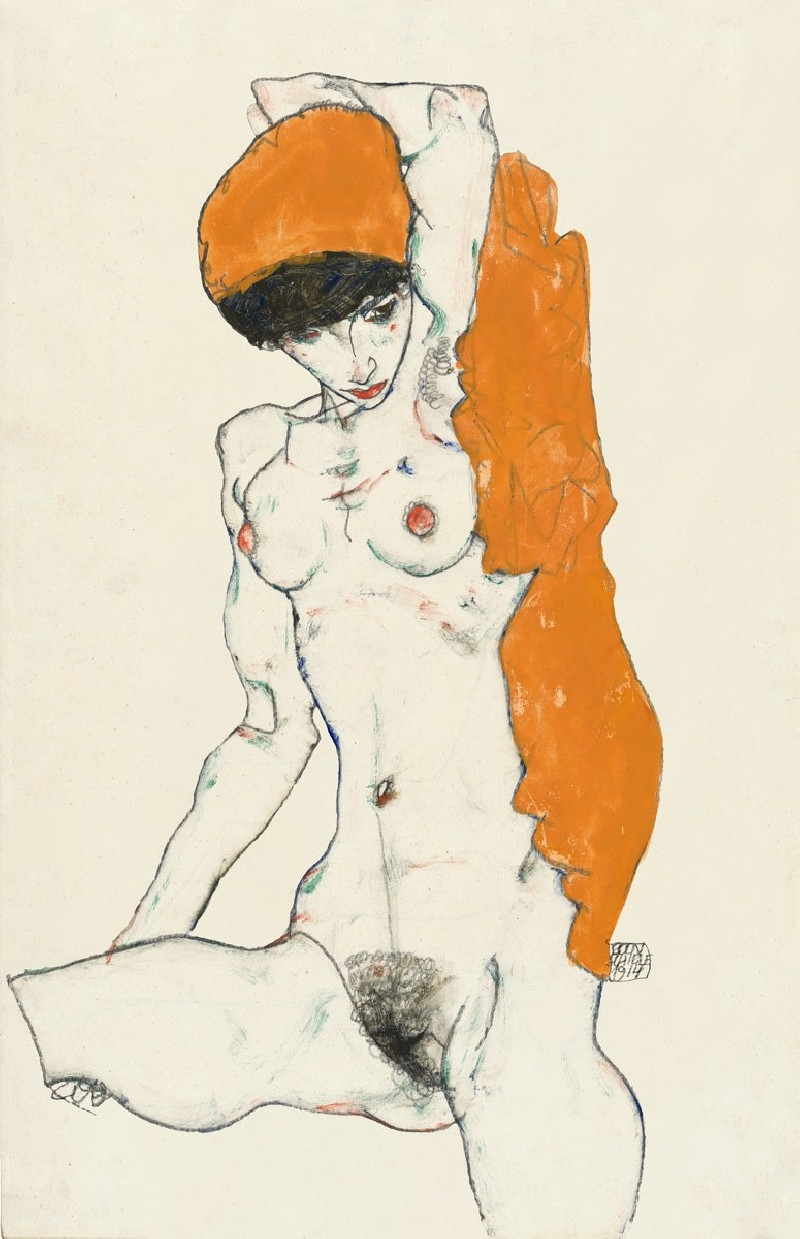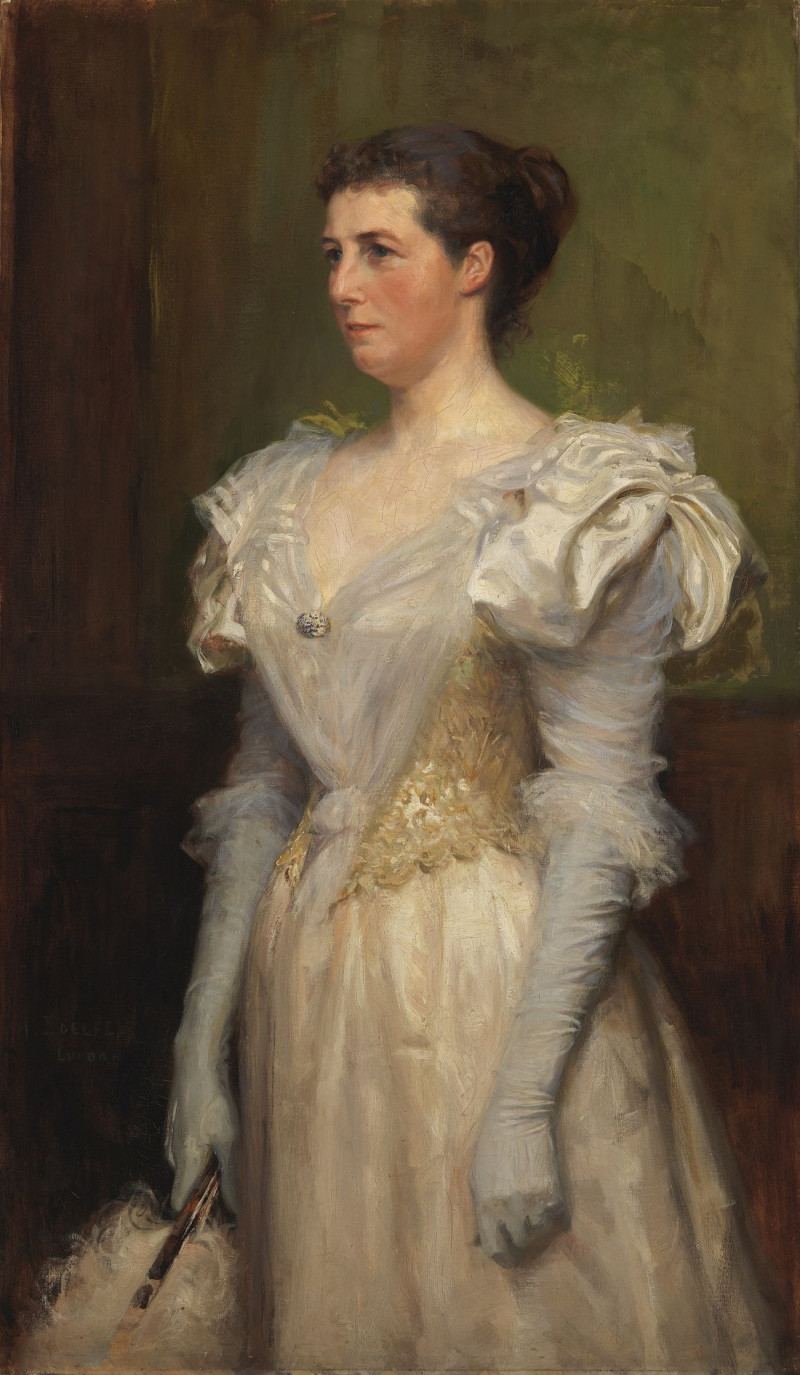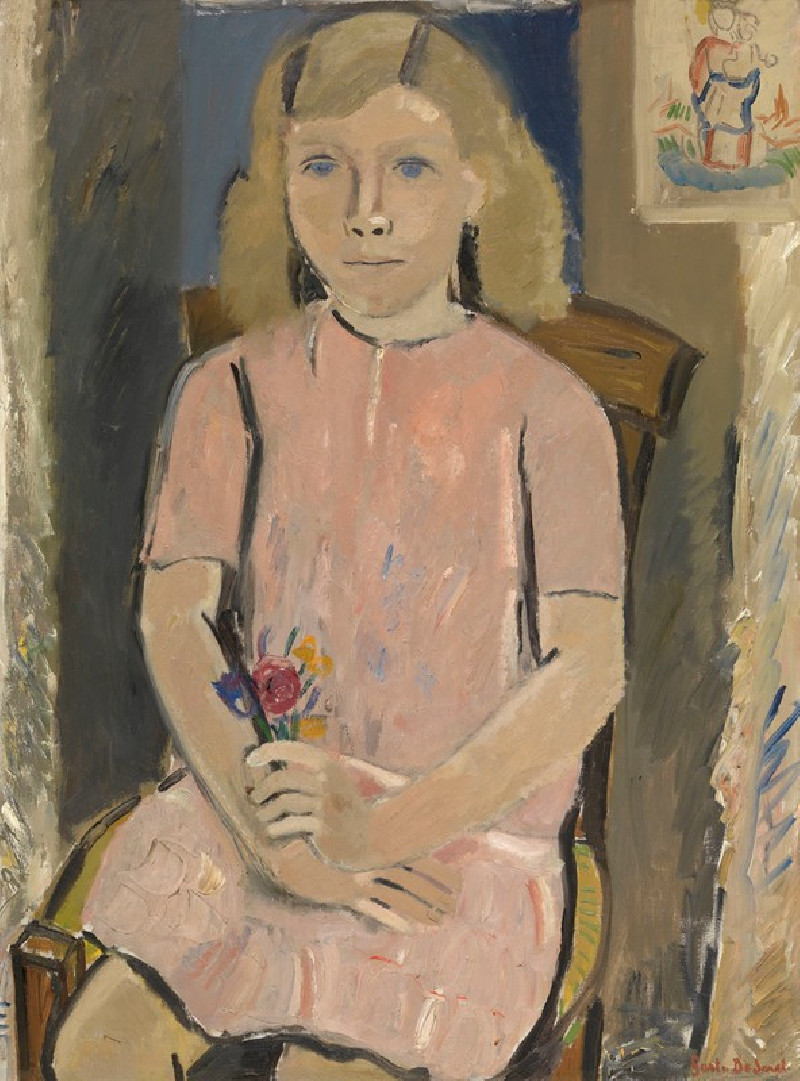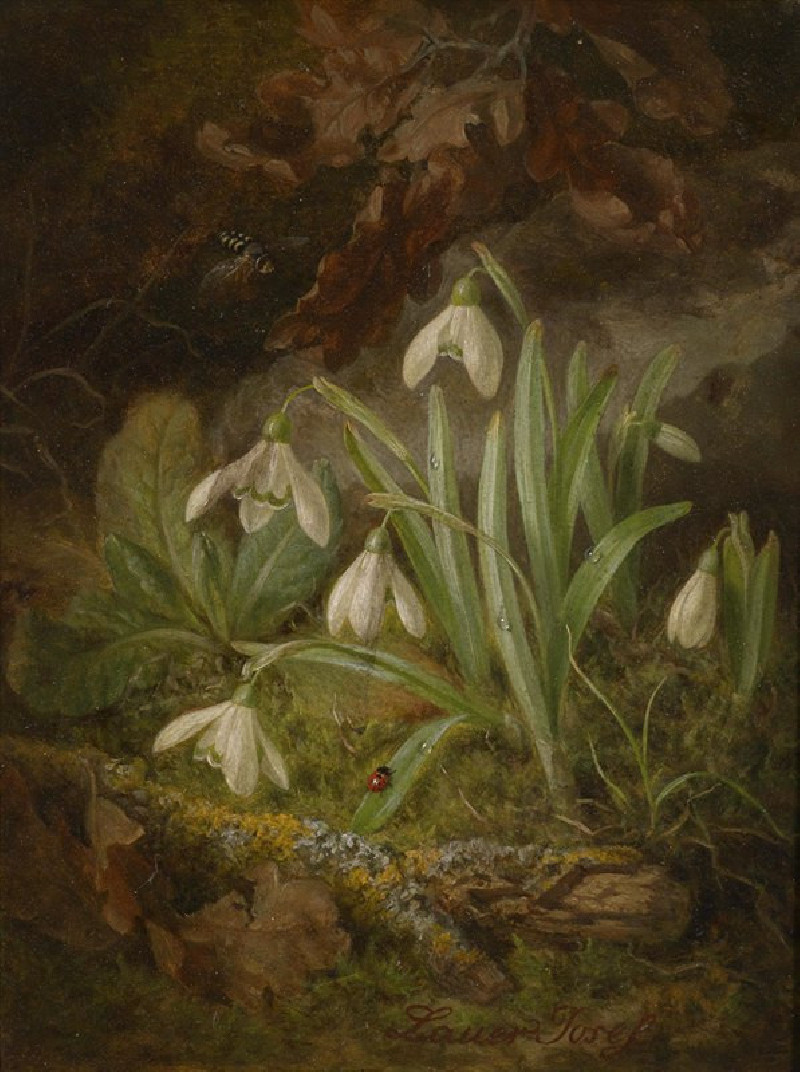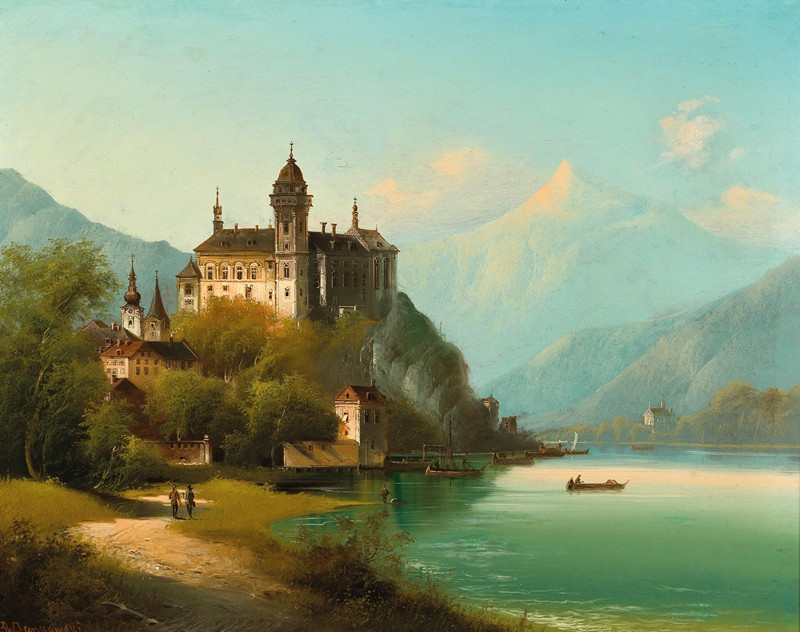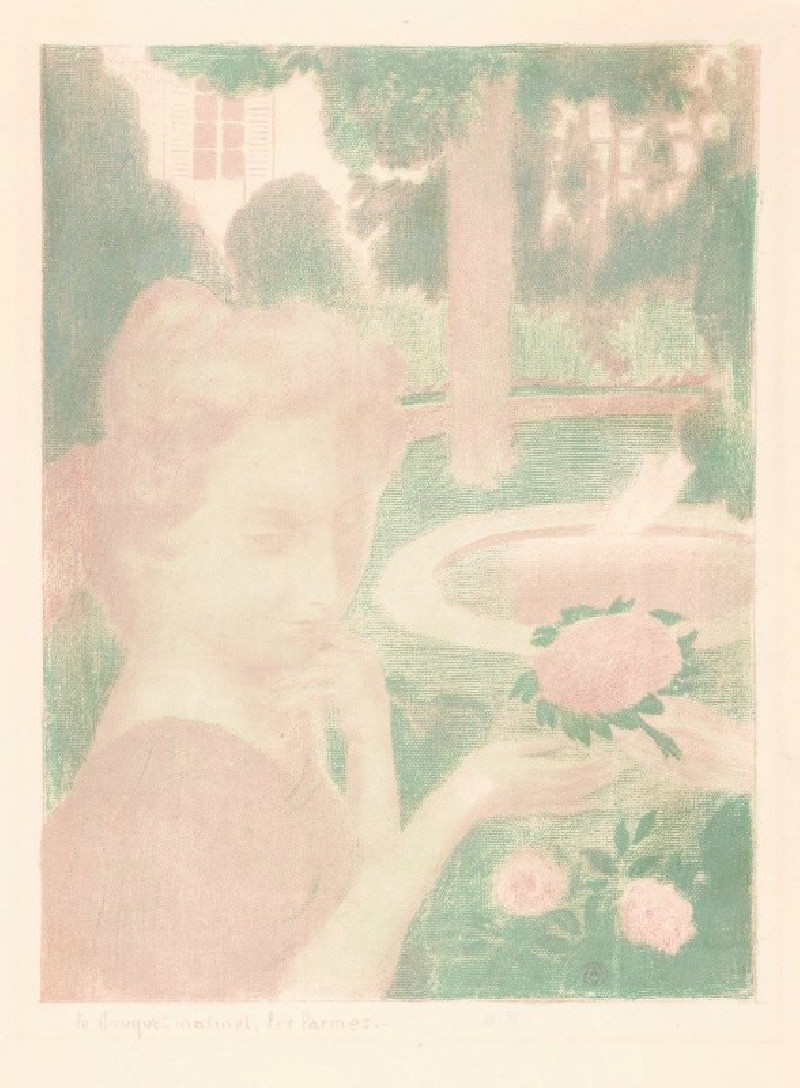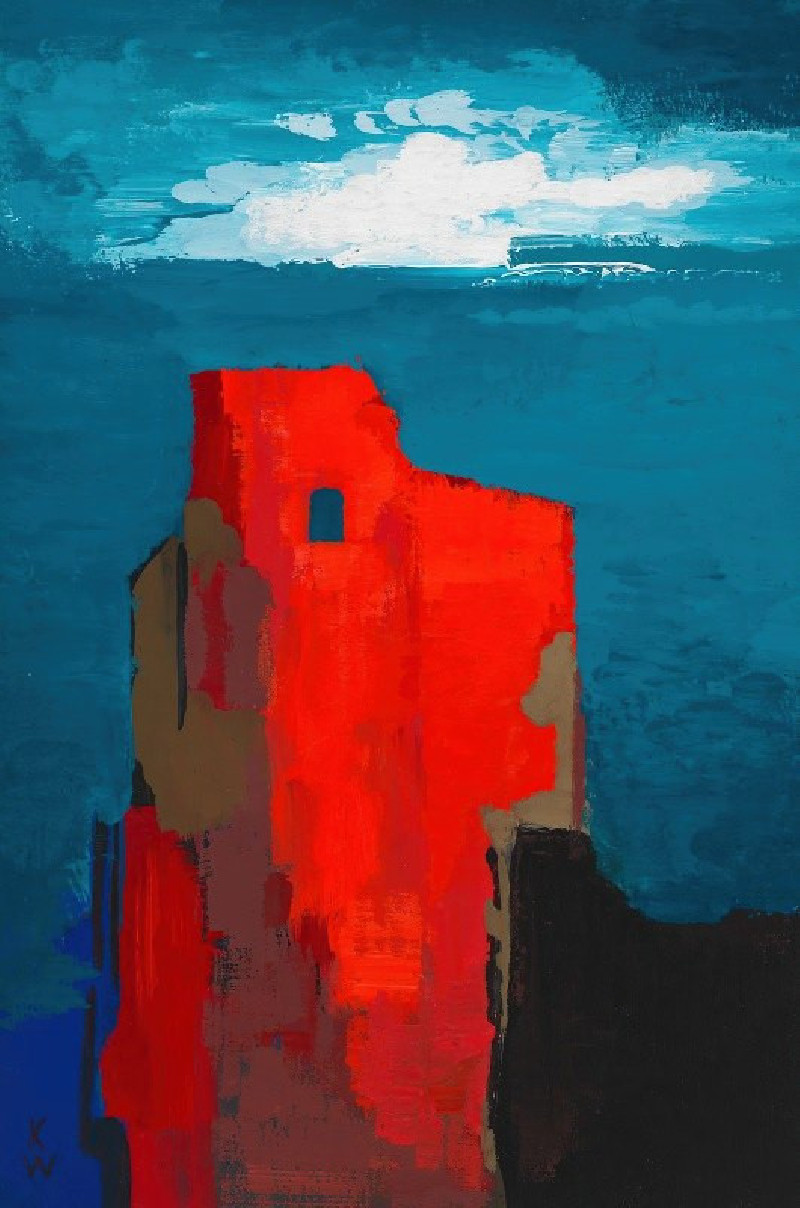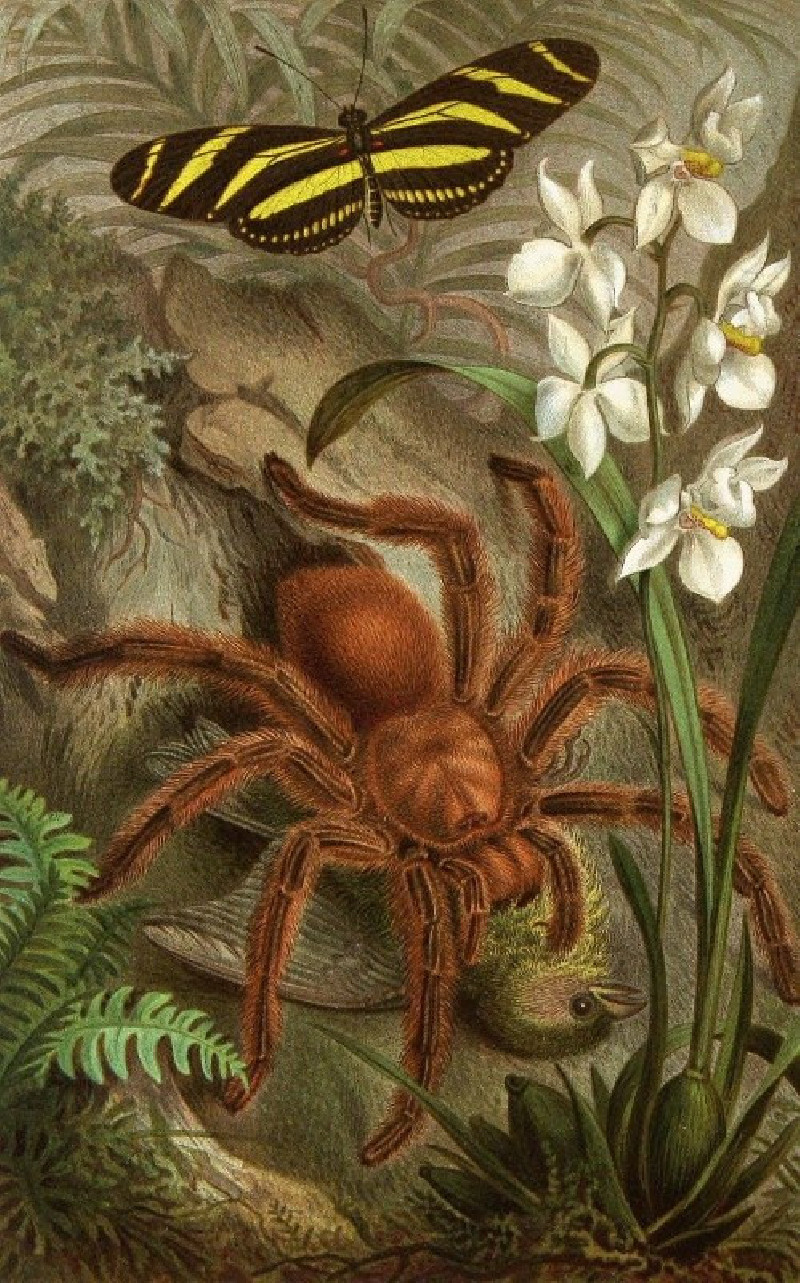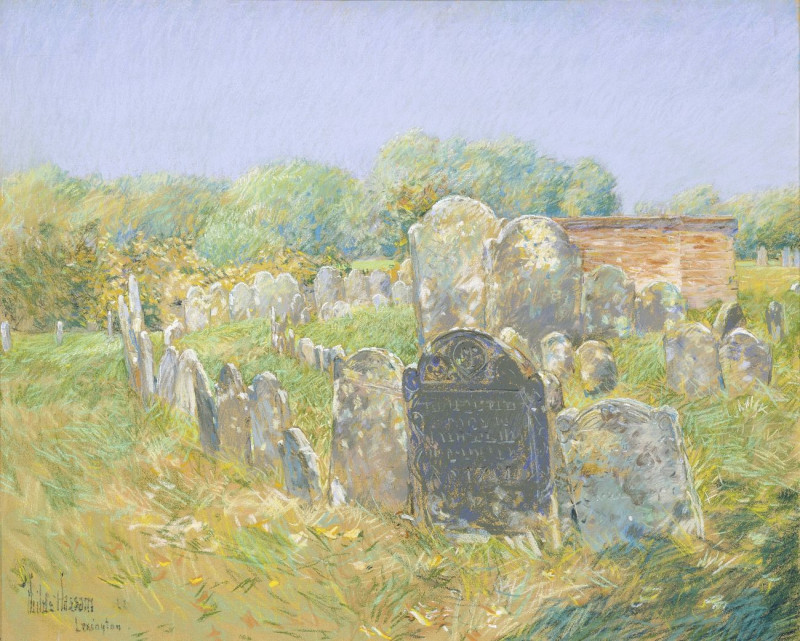Hockendes Paar (wohl nach Ajanta) (1910)
Technique: Giclée quality print
Recommended by our customers
More about this artwork
Ernst Ludwig Kirchner's drawing titled "Hockendes Paar (wohl nach Ajanta)" (1910) showcases Kirchner's fascination with the expression of human form and emotion in a markedly simplified style. This artwork, inspired possibly by the ancient murals found at the Ajanta Caves in India, captures a pair of figures in a crouching position that exudes a primitive and expressive energy.The composition uses minimal lines to outline the figures, a style typical of Kirchner's experimental phase with expressionism. The two characters are depicted in a dynamic interaction: the left figure appears to be grasping his chest in a gesture that could signify emotion or pain, while the right figure, potentially a female based on the slight hint of breasts and wider hips, has an arm extended, possibly in a gesture of communication or comforting. Both faces are abstracted, with exaggerated features that emphasize the expressive quality of the piece rather than detailed realism.The background is stark and uncluttered, focusing all attention on the figures. The use of negative space and rough, sketch-like lines creates an immediacy and rawness, inviting viewers to reflect on the human condition and the unspoken tensions and companionship depicted in these forms.
Delivery
Returns
Ernst Ludwig Kirchner (1880–1938) was one of the most important German Expressionist painters. He was a co-founder of Die Brücke, a group of German expressionist artists formed in Dresden in 1905. Die Brücke and Kirchner took inspiration from Vincent Van Gogh and Edvard Munch, as well as African and Oceanic art. They used woodblock printing as a medium to showcase their signature style: flat, unrealistic images with vivid colors. The recurring themes in Kirchner's artworks included exotic cultures, faraway landscapes, self-portraits, dancers and Berlin street life. His paintings and prints effectively portrayed non-European cultures despite the fact that he never traveled outside of Europe.
































